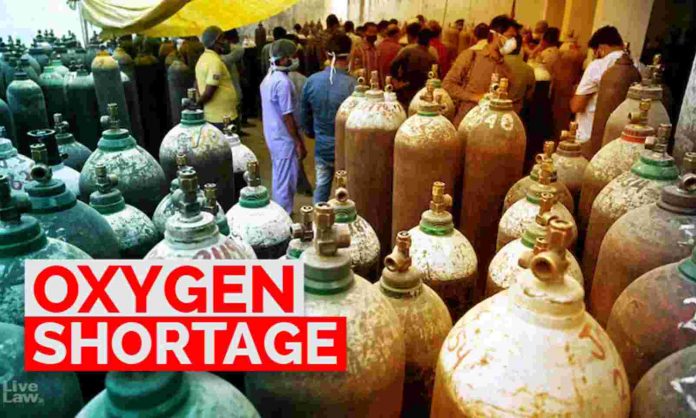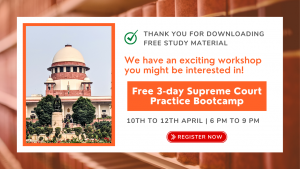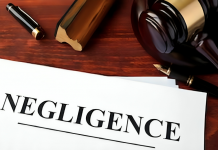
This article is written by Saurav Narayan, pursuing a Certificate Course on Advance Supreme Court Practice: Drafting, Procedure, and Strategy from Lawsikho.
Table of Contents
Introduction
The country is witnessing unprecedented times. Seeing people dying, people in the queue for oxygen, and seeing them dying without oxygen is heart-wrenching. More than 2.5 lakh cases are recorded daily as I am writing this article and more than 4,000 deaths on a daily basis and this death number does not match with the cremations house because whatever we see at cremations house or dead bodies floating in the river Ganga tell us the different stories. In this article, the author will be discussing the World Health Organization (WHO) stand on the Right to health, Article 21 and its brief jurisprudence, various judgments on the Right to life including the Right to health, and State response during Covid times.
World health organization on the Right to health
According to the World Health Organization (WHO) health, and the health of those we care about, is a daily concern for us as humans. We see our health as our most basic and essential asset, regardless of our age, gender, socioeconomic status, or ethnic heritage. On the other hand, poor health can prevent us from going to school or a job, from attending to our family responsibilities, or from fully engaging in community activities. In other words, when we talk about well-being, we frequently refer to health. The right to health is an essential component of our human rights and our concept of what it means to live a dignified life. To give it its correct title, the right to enjoy the best attainable degree of physical and mental health is not new. Health was first defined internationally in the 1946 World Health Organization (WHO) Constitution, which defines it as “a state of complete physical, mental, and social well-being, not merely the absence of disease or infirmity.” The preamble further states that “the enjoyment of the highest attainable standard of health is one of the fundamental rights of every human being without distinction of race, religion, political belief, economic or social condition.” The right to an acceptable standard of life was also addressed in the 1948 Universal Declaration of Human Rights (art. 25). In 1966, the International Covenant on Economic, Social, and Cultural Rights reaffirmed the right to health as a human right.
WHO firmly believes that the right to health is an inclusive right and is not only limited to access to health care and building of hospitals rather it extends further which includes a wide range of factors that will help lead us to a healthy life. The Committee on Economic, Social and Cultural Rights, the body responsible for monitoring the International Covenant on Economic, Social, and Cultural Rights, calls these the “underlying determinants of health”. That will include the following point;
- Food safety;
- Sufficient nutrition and housing;
- Healthy work environment and surroundings;
- Information related to health and education;
- Gender equality.
Article 21
Article 21 of the Constitution of India states that “No person shall be deprived of his life or personal liberty except according to procedure established by law “
Article 21 ensures that everyone has the right to life and personal liberty. The right to life is more than just a guarantee against taking someone’s life; it has a broader meaning. The Supreme Court in a series of cases held that “any act which damages or injuries or interferes with the use of any limb or faculty of a person either permanently or temporarily, would be within the inhibition of Article 21″. Right to life means to live with human dignity, free from exploitation.”
Article 21’s purpose is to serve as a check on the executive, ensuring that it does not act against an individual’s life or personal liberty unless it is authorized by law and follows the procedures set forth therein. This article can be denied if a person is detained by or under the authority of law. We have understood the statute part now let us have a look at the Jurisprudence part.
The jurisprudence of the right to life
“Right to life is the heart of Fundamental rights. Any other fundamental right can be used if we have the right to life first. It is that right that a person must have every time. Every system recognizes it as a basic and natural right which is the most valuable right.” Said Prof. Faizan Mustafa, Vice-Chancellor of NALSAR University of Law, Hyderabad in his Legal Awareness Web Series dated 24 Apr 2021. In fact, the state comes into existence so that this right cannot be breached except according to the procedure established by law.
Humans’ life is impossible if we do not have Right to life and everyone who is reading this article will also agree to this fact that ‘oxygen’ is most important and crucial to constitute a right to life. If we do not have oxygen for a few minutes, we do not have the right to life. The Supreme Court and other courts expanded the right to life and gave various landmark judgments.
Supreme court and other courts judgments on the Right to life
In Hussainara Khatoon & Ors vs Home Secretary, State Of Bihar Apex Court held that the State has a constitutional obligation under Article 21 to ensure a speedy trial, and it must do whatever is necessary to achieve this goal.
In Maneka Gandhi vs Union Of India Supreme Court held that Article 21’s notion of “personal liberty” includes the right of locomotion and travel abroad, and no one’s right to go abroad can be taken away from them until they follow the legal procedure.
In Francis Coralie Mullin vs The Administrator, Union Top Court held that the right to life encompasses the right to live with human dignity and all that entails, including the essential necessities of life, such as adequate nutrition, clothes, and shelter, as well as facilities for reading, writing, and expressing oneself in a variety of ways, as well as the freedom to move around and mix and interact with other people.
In the case of Puttaswamy v. Union of India, the Supreme Court decided that the right to privacy is a fundamental right protected in Part III of the Indian Constitution.
In Vellore Citizens, Welfare Forum vs Union Of India & Ors Court decided that Article 21 guarantees the right to a dignified life in a healthy environment with sufficient sanitation and pollution-free air.
Olga Tellis & Ors vs Bombay Municipal Corporation Court held that Article 21 includes the right to livelihood. In State of Punjab v. Ram Lubhaya Bagga, the Court said that it has time and again emphasized to the government and other authorities for focusing and giving priority to the health of its citizens, as it (health) not only makes one’s life meaningful and improves one’s efficacy.
In Vincent Panikurlangara v. Union of India, it was observed by the top court that “Maintenance and improvement of public health have to rank high as these are indispensable to the very physical existence of the community and the betterment of these depends on the building of the society which the Constitution envisages. Attending public health, in our opinion, is, therefore, of high priority – perhaps one at the top”.
Justice Ranganath Mishra’s observation regarding the right to health vis-a-vis the right to life in the instant case was as follows; “Article 21 of the Constitution guarantees right to life and this court has interpreted the guarantee to cover a life with normal amenities assuring good living which include medical attention, a life free from diseases and longevity up to normal expectations.”
In an emergency, prompt and high-quality medical care might be the difference between life and death. Article 21 of the Indian Constitution of 1950 protects everyone’s right to life. This includes your right to receive emergency medical treatment. Every state government has a responsibility to protect the lives of individuals seeking medical treatment. Further, in the case of Pt. Parmanand Katara vs Union Of India & Ors Apex Court held that In both private and public hospitals, all medical professionals and doctors have a responsibility and duty towards the community’s health.
In Pravat Kumar Mukherjee vs Ruby General Hospital & Ors, National Consumer Dispute Redressal held that If a patient is unable to pay for emergency medical care, they cannot be turned away. Emergency care should be delivered without exception, and all criteria of care and quality must be met. Doctors cannot put a patient’s life at risk while they wait for costs to be paid.
In the present Covid times we are far away from human dignity, we are unable to save a life. On this note let us look at the State response during these covid times.
States response during this covid times
According to The Wire report, more than 175 Covid patients died due to lack of Oxygen in India. Hospitals in Delhi have been forced to display signs saying they have run out of oxygen, reported BBC. Let us briefly look at what courts have stated on the lack of oxygen. Top court asks Central Government on these points:
- Supply of oxygen.
- Supply of essential drugs.
- Method and manner of vaccination.
- Declaration of lockdown.
Deaths due to lack of oxygen not less than a ‘genocide’, said Allahabad HC reported by The Hindu. “Citizens can only fall back on the State. So you have to beg, borrow or steal and ensure the protection of fundamental emergency” said the Delhi High Court reported by Live Law.
Allahabad High Court in the case of In-Re Inhuman Condition At Quarantine Centres And For Providing Better Treatment To Corona Positive v. the State of U.P said that “the entire medical system of the State pertaining to the smaller cities and villages can only be taken to be like a famous Hindi saying ‘Ram Bharose’” Court further went on and said When a state cannot meet the medical requirements of our people in normal times then it definitely had to collapse in the face of the present pandemic.
Although this order of Allahabad High Court order stayed by Supreme Court, the author thinks this should not be done because Allahabad High Court in its order clearly stated that the viability of this order may be looked into by the State Government which is also explained by Prof. Faizan Mustafa Vice-Chancellor of NALSAR University of Law, Hyderabad in his Legal Awareness Web Series dated 22 May 2021. If the state response would have been good, the court would not have said these often-stated points.
Covid-19 orders (Hon’ble Supreme Court of India)
The Supreme Court in the case of Union of India v. Rakesh Malhotra set up a 12-member National Task Force to simplify and assure the “effective and transparent” distribution of liquid medical oxygen to States and Union Territories fighting COVID-19 on a “scientific, rational, and equitable basis.”
In the case of Gurcharan Singh v. Ministry of Finance dated 21 May 2021, the Division Bench of the High Court of Delhi held that the imposition of IGST on oxygen concentrators imported as gifts for personal use violates Articles 14 and 21 of the Constitution and is thus unconstitutional.
Delhi High Court made some remarkable observations in this judgment and said for the citizens of this country, this is a George Floyd moment. The refrain is, “I can’t breathe?”, but in a somewhat different context and location; although, some would argue, in far more terrifying and ghastlier conditions. The citizens have been driven to desperation and despair as they have been pursued and driven by the merciless novel Coronavirus.
However, Supreme Court stays the order of the Delhi High Court decision that declared the IGST on oxygen concentrators imported by individuals to be unconstitutional.
Considering the surge in active Covid-19 cases, a Karnataka high court order asked the Centre to immediately boost the supply of medical oxygen to the state from 962 metric tonnes (MT) per day to 1,200 MT per day. This order of the Karnataka High Court was challenged by the Central government in the Supreme Court.
The Supreme Court affirmed a Karnataka High Court ruling of Union of India Mohammed Arif Jameel & Anr. directing the Centre to supply the state with 1,200 MT of oxygen every day.
Conclusion
The citizens crave for their right to life and human rights to be protected. As a member of the legal fraternity and citizen, the author urges and implore states to take steps to serve the interests of the public at large in these challenging times and prevent the situation from culminating into an implicit acceptance of social injustice, by upholding the values enshrined in the ever so reverential Constitution of India.
References
1.List II, Schedule VII, Constitution of India, 1950
2 .https://www.ohchr.org/documents/publications/factsheet31.pdf
Students of Lawsikho courses regularly produce writing assignments and work on practical exercises as a part of their coursework and develop themselves in real-life practical skills.
LawSikho has created a telegram group for exchanging legal knowledge, referrals, and various opportunities. You can click on this link and join:
 Serato DJ Crack 2025Serato DJ PRO Crack
Serato DJ Crack 2025Serato DJ PRO Crack









 Allow notifications
Allow notifications



